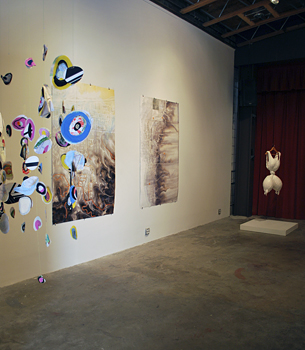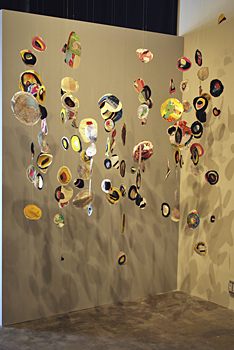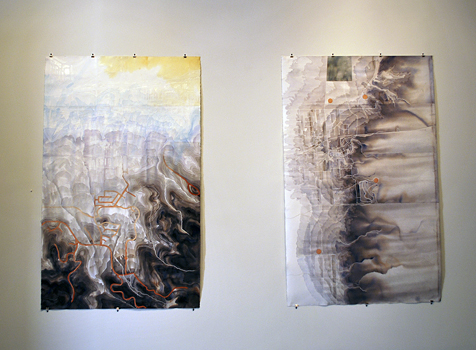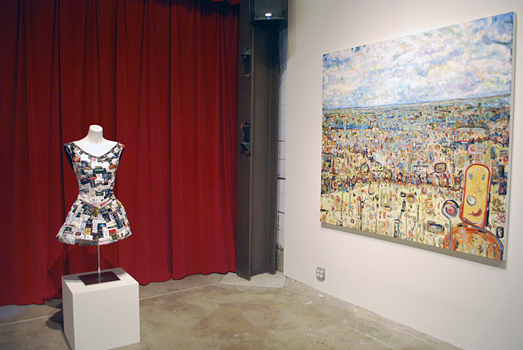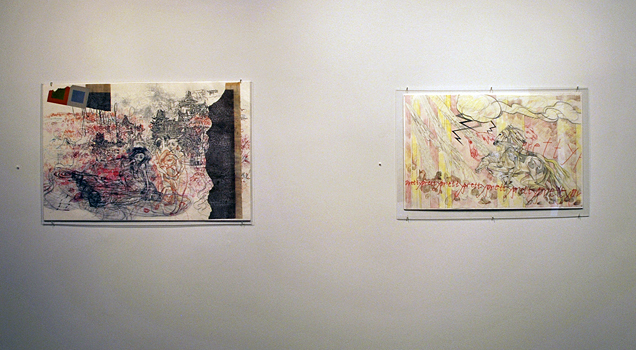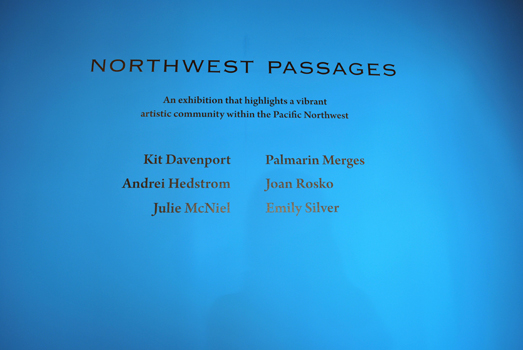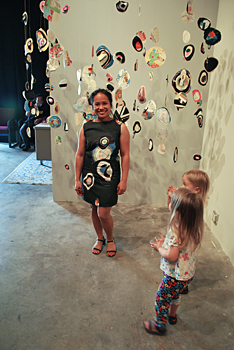| Northwest Passages |
May 3 – June 15, 2013 |
Artists: |
| About the Exhibition: Studio Quercus is pleased to present, Northwest passages. An exhibition that highlights a vibrant artistic community within the Pacific Northwest. Featuring paintings by Andrei Hedstrom and Emily Silver; mixed media drawings by Julie McNiel, mixed media installation by Palmarin Merges and sculpture by Kit Davenport and Joan Rosko. Opens May 3rd, 6-9PM in conjunction with the First Friday Gallery Walk. Exhibition runs through June 15th. Artist's reception on Saturday May 11th, 4-6PM Amidst the California coastal mountains, north of the Lost Coast in the Six Rivers bioregion is a circle of artists whose work traverses the terrain, color fields and forms, and social conditions of this region. With approaches ranging from the political to the poetic, the formal-sensual to the cross-cultural, these artists respond to a life lived in a rural context far from major urban art centers. These six artists who moved away from major urban art centers (in particular, the SF Bay Area) to live in the Pacific Northwest region, in a more rural environment. Each is acutely aware of and sensitive to the effect that Place has on their lives as working artists. For some the migration north has had a profound influence on the kind of imagery made, and the forms explored. In their daily lives they are now more apt to drive, bike, bus or walk to work, through farmlands, fields, forests, or small-town neighborhoods; less likely to navigate congested highway traffic, fight for precious parking spaces, or awaken to the throbbing sounds of car. This might suggest a romanticized scenario of close connection to wild nature or a slower pace of life. Yet the reality is that the artists continue to struggle in a competitive world, as most artists do, to make a living and keep pace with new trends and technologies. Some propose that Regional Art is dead, and perhaps this is true. Yet, one aspect of living in a rural area that remains distinctive is the importance of the alliance of artist-friends that is self-sustaining on many levels. With fewer opportunities and less anonymity, artists must work together, collaboratively pooling resources to continue to make quality work, accessing new and different audiences who might not be a "typical art audience", within a smaller community. What unifies the group is participation in recent years in concentrated critical dialogue, collaborative art-making, and community-building.
|

